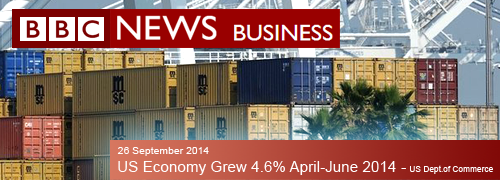
AS REALITIES SET IN
The recent election concluded this month has called on us all to think about our country not only on voting day but beyond. What future do we want for this great country? Can we sustainably pay our own way in the world so that all New Zealanders and their families can succeed? Will we be able to look after our young, our workers and businesses wanting a fair deal, and those older of us who want to retire with dignity, in good health and with security? Are we on the right track?
New Zealand’s population is growing mostly because of net inward migration. Without it the natural increase in popu lation will decline steadily over the next few decades as it gradually ages driving an increase in deaths over births. Japan, for example, is a good example of this scenario. If sub-replacement fertility is merely sustained, deaths will increasingly exceed births in many areas of New Zealand.
Fortunately in this year alone, population growth from migration surged to a new high with a record net gain of 43,483 in the year to August, according to Statistics NZ. It is expected that the annual net inflow of migrants may peak at 50,000 by early next year. Surging net migration will support the housing market and boost spending in the New Zealand economy but ultimately the cur rent surge in net migration is set to be temporary over the long run.
IF THEY FLOURISH
Right now, cities around the world are competing fiercely to attract new busi nesses as well as the brightest of young professionals, seasoned executives and their families. If they flourish, so will creativity and innovation – the fuel that drives our national economy.
Beyond its traditional and primary industries, attracting new businesses large and small to invest long-term and operate in New Zealand is also crucial to the steady growth and diversification of New Zealand’s economy.
Take for example the case of the Philippine conglomerate Gokongwei Group of Companies which this year purchased of Griffin’s Foods Limited for NZ$700 million (US$609 million) through its Universal Robina Corporation (URC) arm.
The Griffin’s board executive chairman Ron Vela believes URC’s significant ex perience in developing its own export markets makes it the ideal partner to take Griffin’s forward as it embarks on this next exciting stage of growth.
Meanwhile, URC President Lance Gokongwei has said “we believe Griffin’s is a natural strategic fit to our existing snack foods portfolio given its strong brand heritage in New Zealand – a country trusted worldwide in having high credibility when it comes to food quality, safety and authenticity.”
URC has been looking for opportunities to explore potential acquisitions and partnerships in line with its vision to be a significant regional player in snack foods and beverages. Griffin’s currently sells its brands to more than 20 coun tries and URC intends to expand on these export opportunities to newer markets abroad, along with growing its branded presence in Australia with its Nice & Natural range of nutritious snacks because it is a major supplier of retailer branded products in that country.
While it has already built very strong brands, URC’s strategy is “to continue offering its existing consumers and markets in the ASEAN-10 Countries and Greater China regions with innovative, convenient, lifestyle-focused and on-the-go products,” said Gokongwei.

AN UNDERLYING VULNERABILITY
This is an excellent example of what Filipinos in New Zealand Group has been promoting to happen for New Zealand given the growing community of Filipino-Kiwis that now number over 40,000. They provide important links and a vote of confidence to other Filipino ‘taipans’ to consider investing long-term in New Zealand especially if the regulatory and economic climate is conducive for doing so.
However, recent developments in the external sector of the economy an nounced by The Treasury reinforce the outlook for slightly weaker forecast GDP growth in the year ahead.
Dairy prices have declined sooner than expected and these forecasts bring forward the fall in prices. Forestry prices have also declined as demand from China has fallen with slower growth in housing construction, partly offset by higher meat prices as sheep meat prices were lifted by additional demand from China but meat supply remains constrained in the US. At the same time, oil prices have increased as geopolitical risks have intensified in the Middle East and Ukraine.
The value of merchandise exports have fallen (in June quarter 2014) with both volumes and prices lower. Meanwhile, import volumes appear to have inc reased, supporting Treasury’s forecast negative contribution from net goods exports to real GDP.
There is also an underlying vulnerability of New Zealand’s economy – it has not had a balance of payments surplus in nearly 40-years. Our BoP outflows are forecast to increase to 4.8% of GDP in year to March 2015 – due to worsening terms of trade. To offset this, over the next 6-years the country will need a more balanced economic agenda to promote investment, growth, employment and a torrent of exports.
CHEAP AND MADE EASY
It doesn’t help that the New Zealand dollar isn’t being looked at too in terms of making it more competitive. This would help New Zealand exporters to operate on more confident ground around the world and get them back on proper footing, create more jobs, inject growth back into our economy and get it really moving again.
One of the reasons perhaps why our Kiwi Dollar is so popular is that savvy over seas fund managers and other speculative investors abroad view it as an easy currency to trade in the short term and coupled with low local interest rates it is one scenario that brings them substantial trading gains repeatedly.
To make matters worse, local Kiwi household and personal debt increases when the Kiwi Dollar trades higher in a regime of low interest rates. Imports are allur ingly cheap and credit made easy this way becomes addictive but eventually a ruinous habit. That’s because it discourages real positive savings that would otherwise serve as a comfortable buffer during tough times and also a source of funding for local borrowers. Likewise, without a strong capital savings base our government and businesses have no other choice but to borrow it abroad. Now, why is this situation dicey?

HEADING OFF THE RISKS
Risks related to the outlook for our major trading partners like China, and global financial settings in general are important factors that can lead to rapid changes in the economic outlook for New Zealand, its people and businesses.
China’s growth could slow more quickly. Currently, due to concerns around the high level of its own local government debt, the quality of lending in its shadow banking sector and exposure of its financial institutions to housing market vul nerabilities which continue to persist, their financial regulators are increasingly becoming more aggressive in tightening up things.
There are also indicators that the US economy may soon start to gain rapid momen tum given its recent strong growth in investment, consumption and construction which, combined with much lower market volatility since 2007, all today point to a significant potential to outperform current forecasts.
US Federal Reserve Chair Janet Yellen has indicated that if future data releases are stronger than expected, normalisation of its monetary policy would happen earlier. That means higher interest rates in the United States and a relatively stronger US Dollar.
A robust US economy could exacerbate the risks to vulnerable economies like New Zealand’s if expectations of a faster withdrawal of monetary stimulus (i.e., low interest rates) by the US were to develop leading to higher interest rates globally. The impact of (and sensitivity to) a tightening in US monetary policy on New Zealand’s economy will undoubtedly be felt by the Crown, local businesses and households’ in terms of both import cost and higher mortgage servicing costs and consequently on domestic demand and employment levels.
LESS PAIN MORE GAIN
Internationally, the risks with potentially the largest impact on New Zealand’s economy relate to the level of demand for New Zealand’s commodity exports, particularly from China, in addition to the timing, frequency and magnitude of interest rate increases in the US and the sensitivity of energy prices to geopoli tical developments.
Domestically, it would be the pace of the Canterbury rebuild and its wider interaction with the national economy; the sensitivity of households to higher debt servicing costs; and, net migration’s impact on domestic demand if it tapers off or declines.
Economic relationships are complex. Going forward, crucial judgements need to be made about key economic variables that include government expenditure and debt levels; sensible tax policy across the board; sustainable council rate levels in light of persistent budget blowouts; the exchange rate of our Kiwi Dollar; our heavy dependence on foreign savings to finance things; and, a rebal ancing of the country’s economic structure grounded on policies that fund amentally capitalize on the natural assets and environment that New Zealand is endowed with and the talent and enterprise of New Zealanders.
If, for any reason, key factors as those that have been outlined above begin to drag on, the impact on inflation outlook would compel the Reserve Bank’s setting of monetary policy to reflect those different conditions much sooner than later. Interest rates would rise and the pace of tightening could be faster than expec ted.
As the months begin to roll by let’s hope that we all will be experiencing less pain, and more gain that is more evenly and more widely distributed.
Filipinos in Christchurch | The Way Forward
______________________________________________________________

 During the Spanish
During the Spanish






























